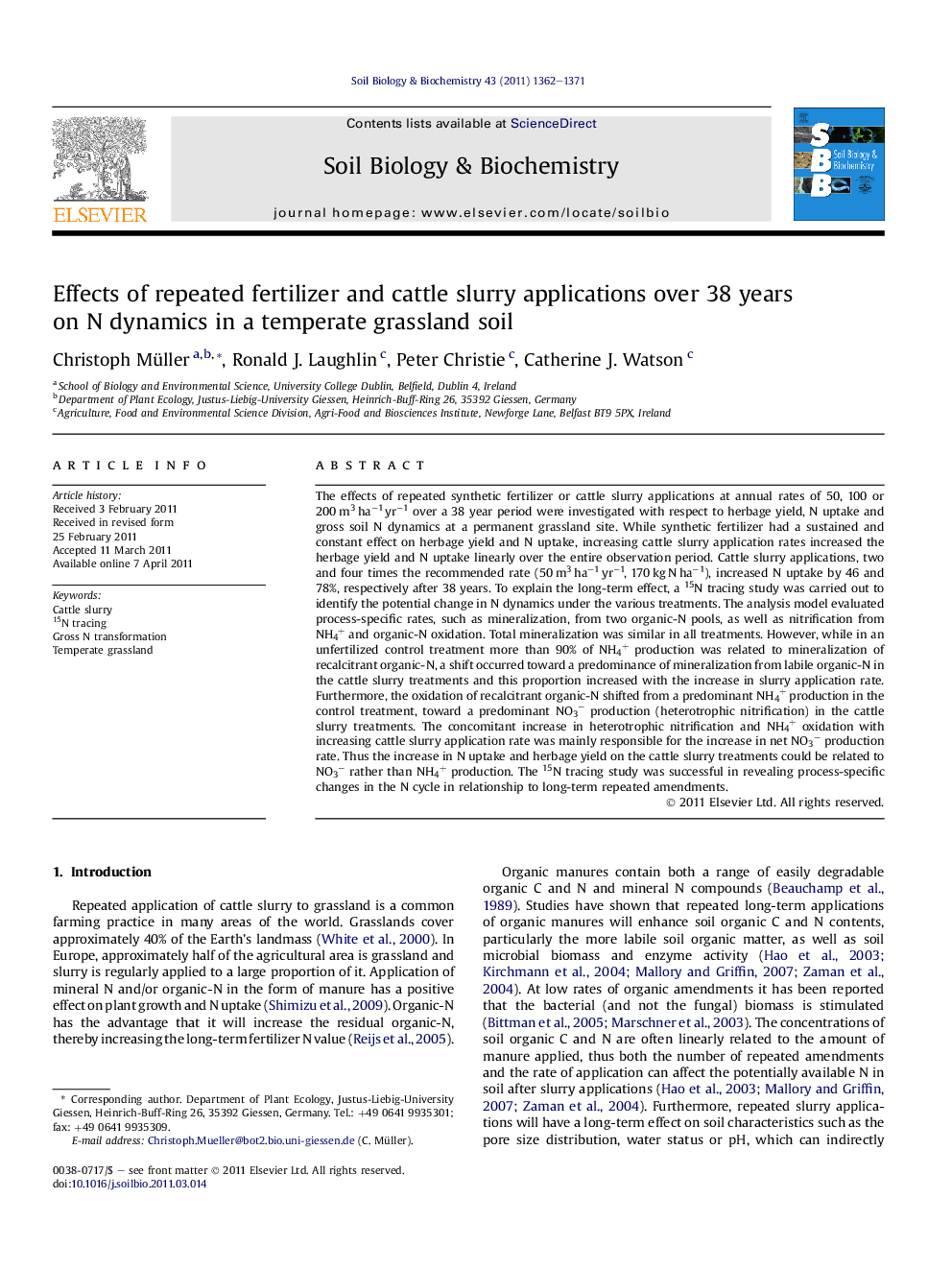| Article ID | Journal | Published Year | Pages | File Type |
|---|---|---|---|---|
| 2025314 | Soil Biology and Biochemistry | 2011 | 10 Pages |
The effects of repeated synthetic fertilizer or cattle slurry applications at annual rates of 50, 100 or 200 m3 ha−1 yr−1 over a 38 year period were investigated with respect to herbage yield, N uptake and gross soil N dynamics at a permanent grassland site. While synthetic fertilizer had a sustained and constant effect on herbage yield and N uptake, increasing cattle slurry application rates increased the herbage yield and N uptake linearly over the entire observation period. Cattle slurry applications, two and four times the recommended rate (50 m3 ha−1 yr−1, 170 kg N ha−1), increased N uptake by 46 and 78%, respectively after 38 years. To explain the long-term effect, a 15N tracing study was carried out to identify the potential change in N dynamics under the various treatments. The analysis model evaluated process-specific rates, such as mineralization, from two organic-N pools, as well as nitrification from NH4+ and organic-N oxidation. Total mineralization was similar in all treatments. However, while in an unfertilized control treatment more than 90% of NH4+ production was related to mineralization of recalcitrant organic-N, a shift occurred toward a predominance of mineralization from labile organic-N in the cattle slurry treatments and this proportion increased with the increase in slurry application rate. Furthermore, the oxidation of recalcitrant organic-N shifted from a predominant NH4+ production in the control treatment, toward a predominant NO3− production (heterotrophic nitrification) in the cattle slurry treatments. The concomitant increase in heterotrophic nitrification and NH4+ oxidation with increasing cattle slurry application rate was mainly responsible for the increase in net NO3− production rate. Thus the increase in N uptake and herbage yield on the cattle slurry treatments could be related to NO3− rather than NH4+ production. The 15N tracing study was successful in revealing process-specific changes in the N cycle in relationship to long-term repeated amendments.
► Repeated N applications over 38 years affect N uptake and N dynamics. ► Changes in the N dynamics were evaluated via a 15N tracing study. ► Applications of slurry shift mineralization from recalcitrant to labile organic matter. ► Increasing cattle slurry applications promote oxidation of NH4+ and organic-N. ► Individual gross N rates are affected by the application rate.
